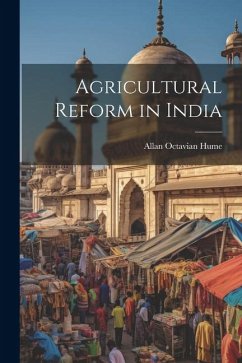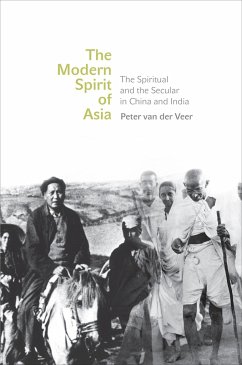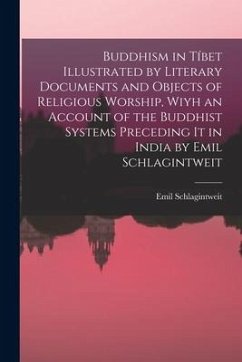
Socio-Religious Reform Movements in British India

PAYBACK Punkte
16 °P sammeln!
Socio-religious Reform Movements in British India will appeal to students and scholars in a wide variety of social scientific disciplines.The third part of The New Cambridge History of India is devoted to the Indian Empire and the Beginnings of Modern Society. In the first volume, Kenneth Jones looks at the numerous nineteenth-century movements for social and religious change - Christian, Hindu, Muslim, Sikh and Zoroastrian - that used various forms of religious authority to legitimize their reform programmes. Such movements were both indigenous and colonial in their origins and Professor Jone...
Socio-religious Reform Movements in British India will appeal to students and scholars in a wide variety of social scientific disciplines.
The third part of The New Cambridge History of India is devoted to the Indian Empire and the Beginnings of Modern Society. In the first volume, Kenneth Jones looks at the numerous nineteenth-century movements for social and religious change - Christian, Hindu, Muslim, Sikh and Zoroastrian - that used various forms of religious authority to legitimize their reform programmes. Such movements were both indigenous and colonial in their origins and Professor Jones shows how each adapted to the challenge of competing nationalisms as political circumstances changed. The volumes in this part of the History consider the overall impact of British rule upon the whole sphere of religion, social behaviour and culture. Its coverage is both historical and religious and Socio-religious Reform Movements in British India will appeal to students and scholars in a wide variety of social scientific disciplines.
Review quote:
"...provides a masterly overview of this complex subject....a brilliant work of scholarly compression..."
Choice
"Drawing on recent historical research, including his own study of the development of Hindu consciousness in nineteenth century Punjab, Jones tells a fascinating story that serves as a valuable background to understanding modern communal conflict in South Asia and as an introduction to more detailed study of the movements themselves."
Robert L. Hardgrave, Jr., Social Science Quarterly
"...this is a useful compendium, to be used as a reference...."
Eleanor Zelliot, Journal of Asian and African Studies
Table of contents:
List of maps; Preface; Note on transliteration; 1. Concepts and context; 2. Bengal and northeastern India; 3. The Gangetic core: Uttar Pradesh and Bihar; 4. Punjab and the northwest; 5. The central belt and Maharashtra; 6. The Dravidian South; 7. The twentieth century: socio-religious movements in a politicised world; 8. Conclusion: religion in history; Glossary of Indian terms; Bibliographic essay; Index.
The third part of The New Cambridge History of India is devoted to the Indian Empire and the Beginnings of Modern Society. In the first volume, Kenneth Jones looks at the numerous nineteenth-century movements for social and religious change - Christian, Hindu, Muslim, Sikh and Zoroastrian - that used various forms of religious authority to legitimize their reform programmes. Such movements were both indigenous and colonial in their origins and Professor Jones shows how each adapted to the challenge of competing nationalisms as political circumstances changed. The volumes in this part of the History consider the overall impact of British rule upon the whole sphere of religion, social behaviour and culture. Its coverage is both historical and religious and Socio-religious Reform Movements in British India will appeal to students and scholars in a wide variety of social scientific disciplines.
Review quote:
"...provides a masterly overview of this complex subject....a brilliant work of scholarly compression..."
Choice
"Drawing on recent historical research, including his own study of the development of Hindu consciousness in nineteenth century Punjab, Jones tells a fascinating story that serves as a valuable background to understanding modern communal conflict in South Asia and as an introduction to more detailed study of the movements themselves."
Robert L. Hardgrave, Jr., Social Science Quarterly
"...this is a useful compendium, to be used as a reference...."
Eleanor Zelliot, Journal of Asian and African Studies
Table of contents:
List of maps; Preface; Note on transliteration; 1. Concepts and context; 2. Bengal and northeastern India; 3. The Gangetic core: Uttar Pradesh and Bihar; 4. Punjab and the northwest; 5. The central belt and Maharashtra; 6. The Dravidian South; 7. The twentieth century: socio-religious movements in a politicised world; 8. Conclusion: religion in history; Glossary of Indian terms; Bibliographic essay; Index.














